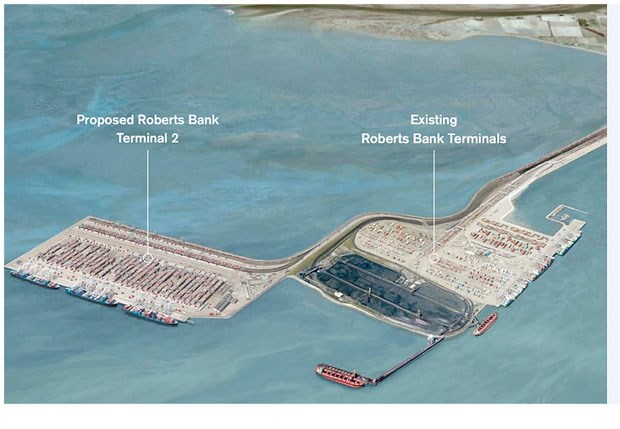It simply re-enforces the case for Terminal 2.
In an interview with the Optimist last week, Port of Vancouver president and CEO Robin Silvester talked about the port’s mid-year statistics that show a new record for container volumes.
According to the port, shipping container quantities (measured in TEUs or 20-foot equivalents) reached a new mid-year record of 1.7 million TEUs, an overall increase of 3.5 per cent compared to mid-year container quantities in 2018.
“Our base case forecasts were actually at around three per cent and our low case to high case range is around two-and-a half up to just under four. Historically, we’ve been trending a little above that base case and we’re, broadly, on a pretty steady three per cent-ish growth in terms of our planning. It doesn’t sound like much but it means we’ll need Terminal 2 by the middle of the 2020s. It’s that steady growth that keeps coming that means we’re going to run out of capacity in the West Coast of Canada if we don’t get Terminal 2 into the mix,” said Silvester.
The independent federal review panel gathering information and feedback on the port’s Terminal 2 application wrapped up a public hearing several weeks ago.
T2 would be a three-berth container terminal on a new man-made island at Roberts Bank, adjacent to the existing Deltaport container terminal.
According to the port’s stats for 2018, container volume increased by 4.4 per cent to a record 3.4 million TEUs. Even with additional capacity provided by facility improvements, forecasts by independent experts show it won’t be enough to manage Canada’s future demand, according to the port authority.
The port last week also noted the independent forecasts show that West Coast container ports will be full by as early as the mid-2020s and therefore unable to accommodate growing trade, which “will have far reaching consequences to the Canadian economy.”
Silvester said the hearing went well and was a great opportunity for all points of view on the proposal to have their say.
“From our point of view, we felt that everything that was presented were things that we had heard and thought about ourselves, and we had answers to those questions. So, we think it was a very good process and we give credit to the panel members. It’s an important part of the process that they made sure people had the opportunity to participate, and they worked hard listening to everything. Now they have the challenging task of thinking about everything they heard and coming up with a decision,” he said.
“We certainly feel we had a fair opportunity to present our position and our team did that very well.”
As far as what’s next for the review panel, those who registered to participate in the public hearing are able to submit closing remarks by Aug. 26.
Following the close of the public hearing record, the review panel will write a report with recommendations and submit it to the minister of environment and climate change who will issue a decision.
The port authority notes it’s possible the review panel could provide a report to the minister by early next year.



